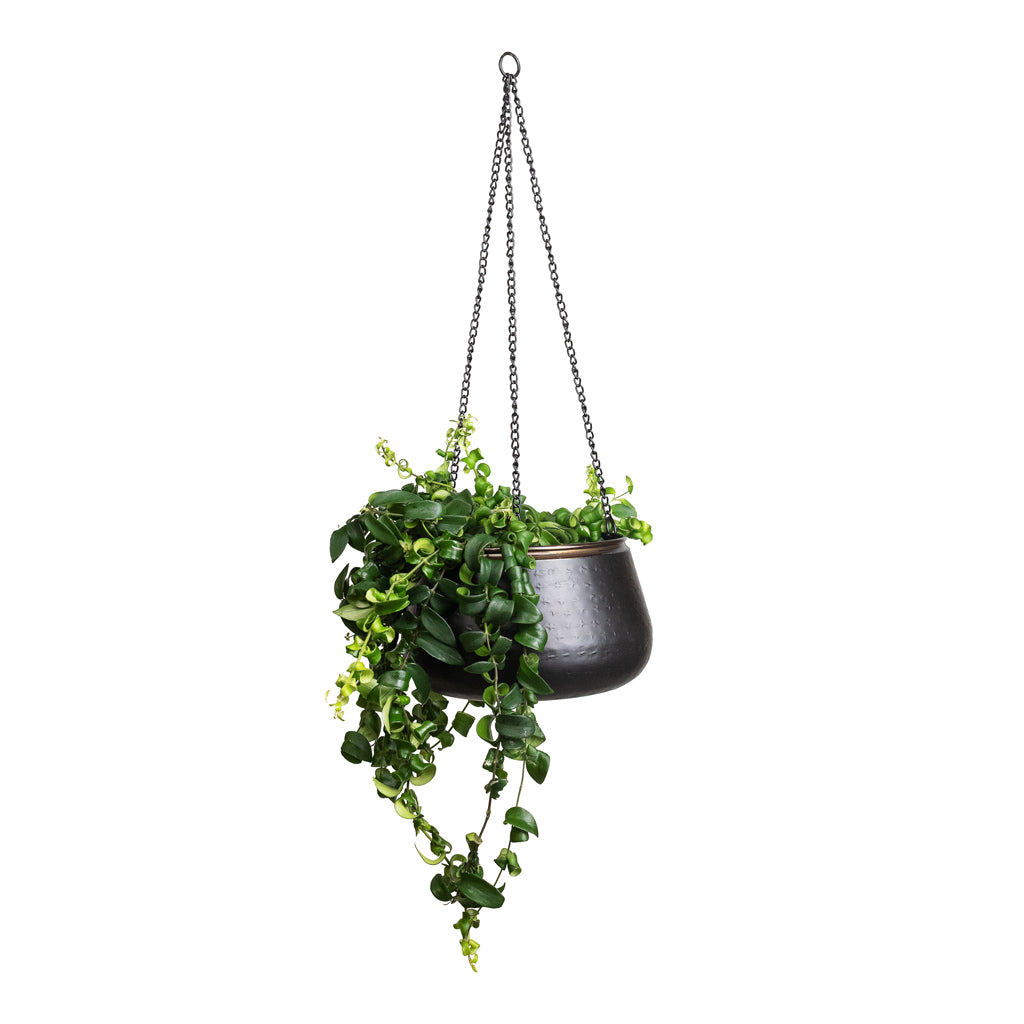
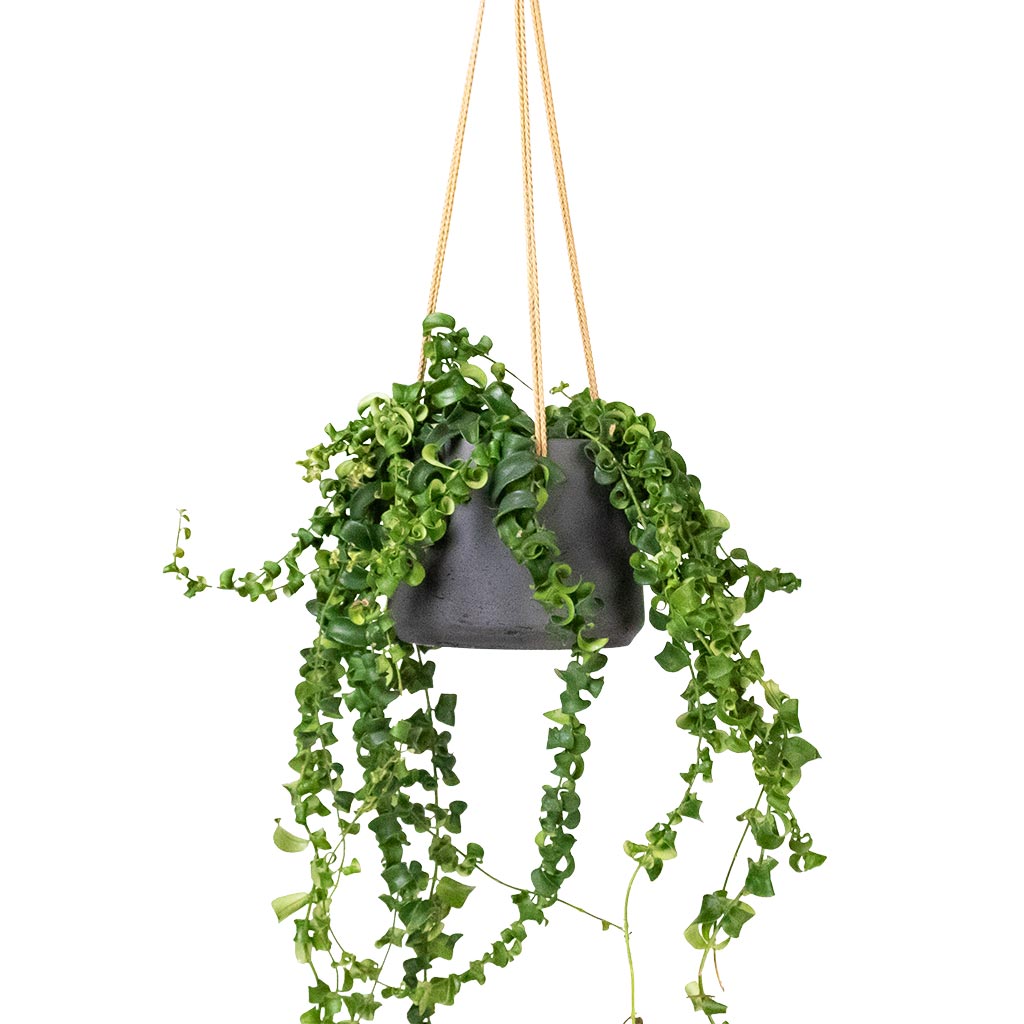
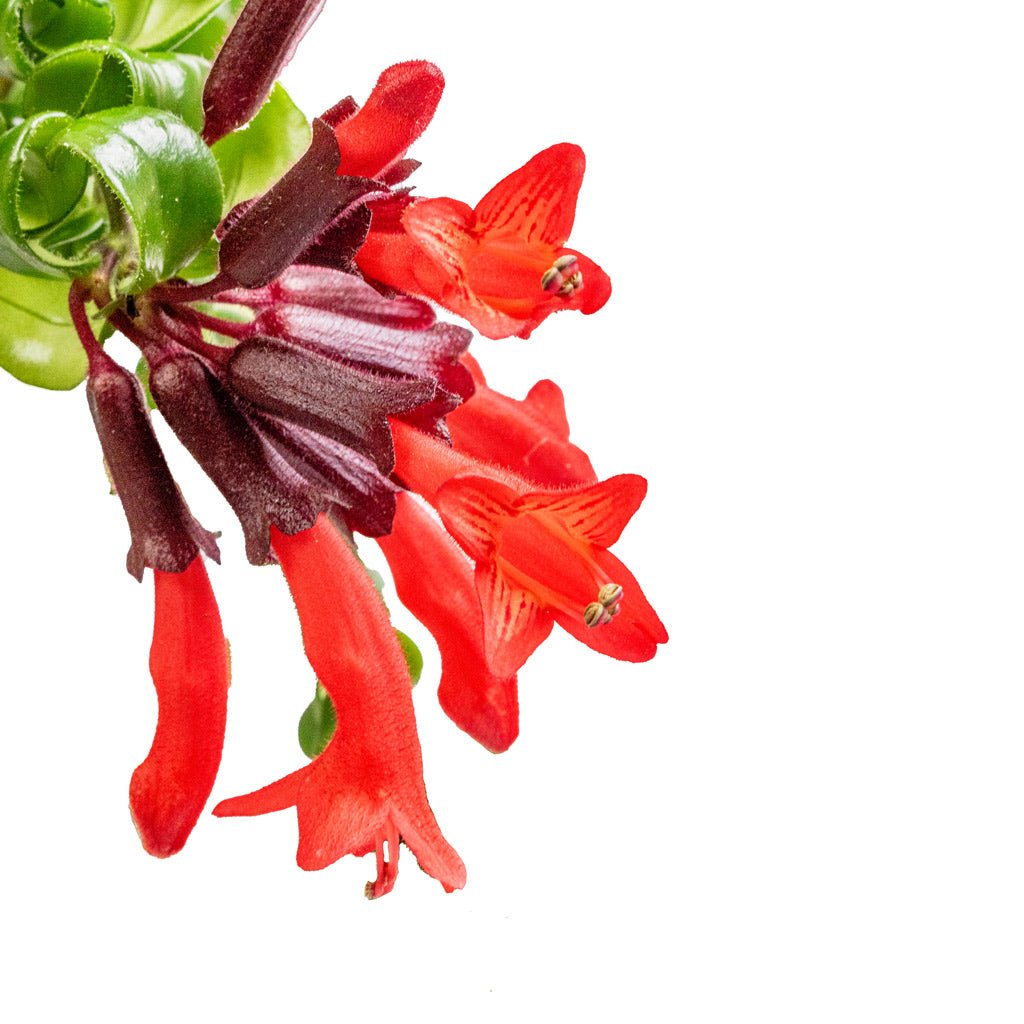
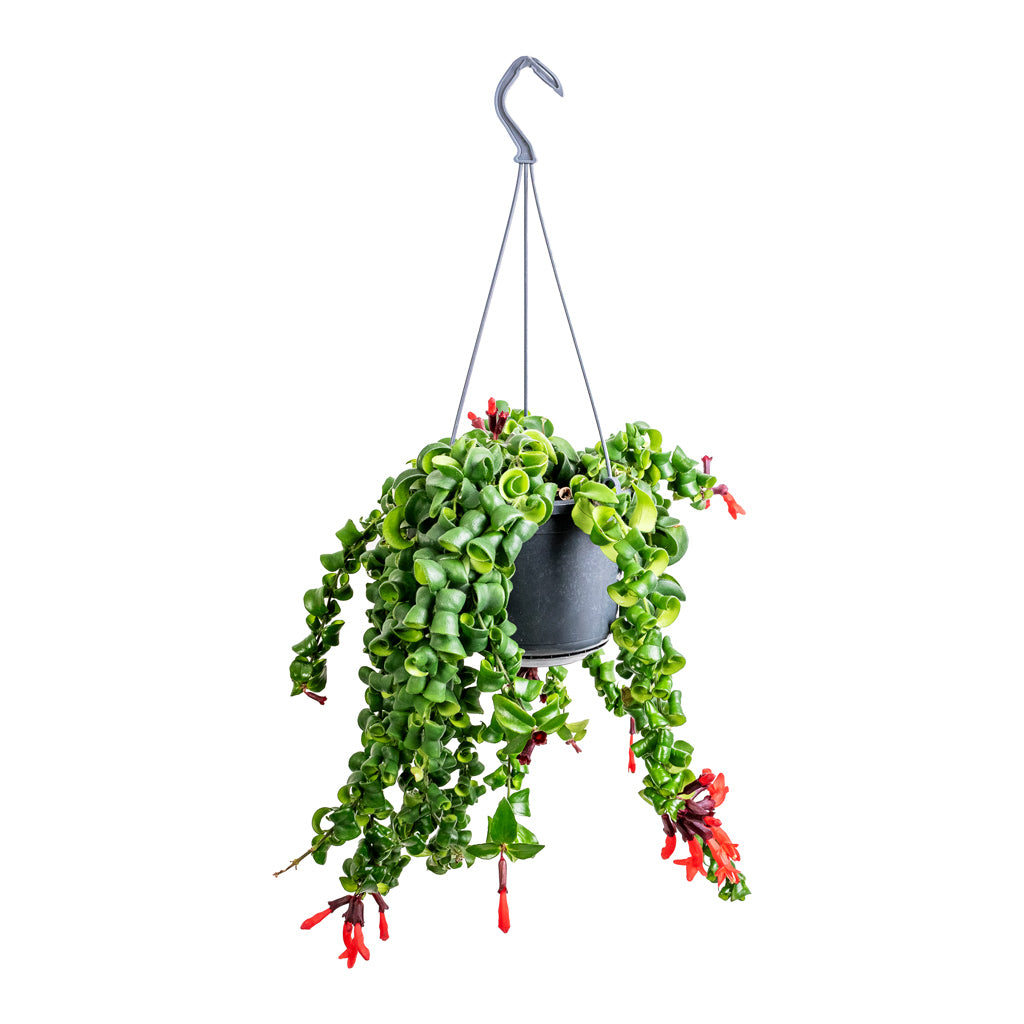
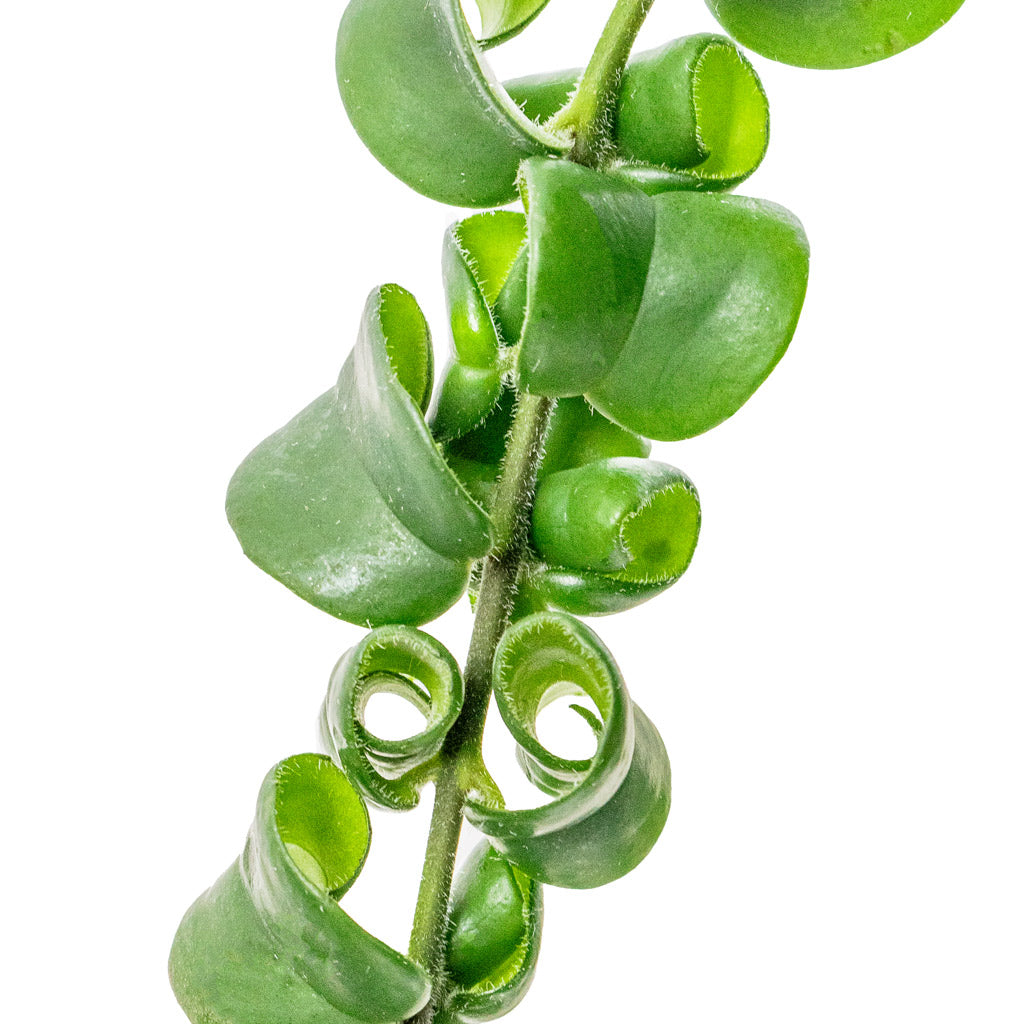
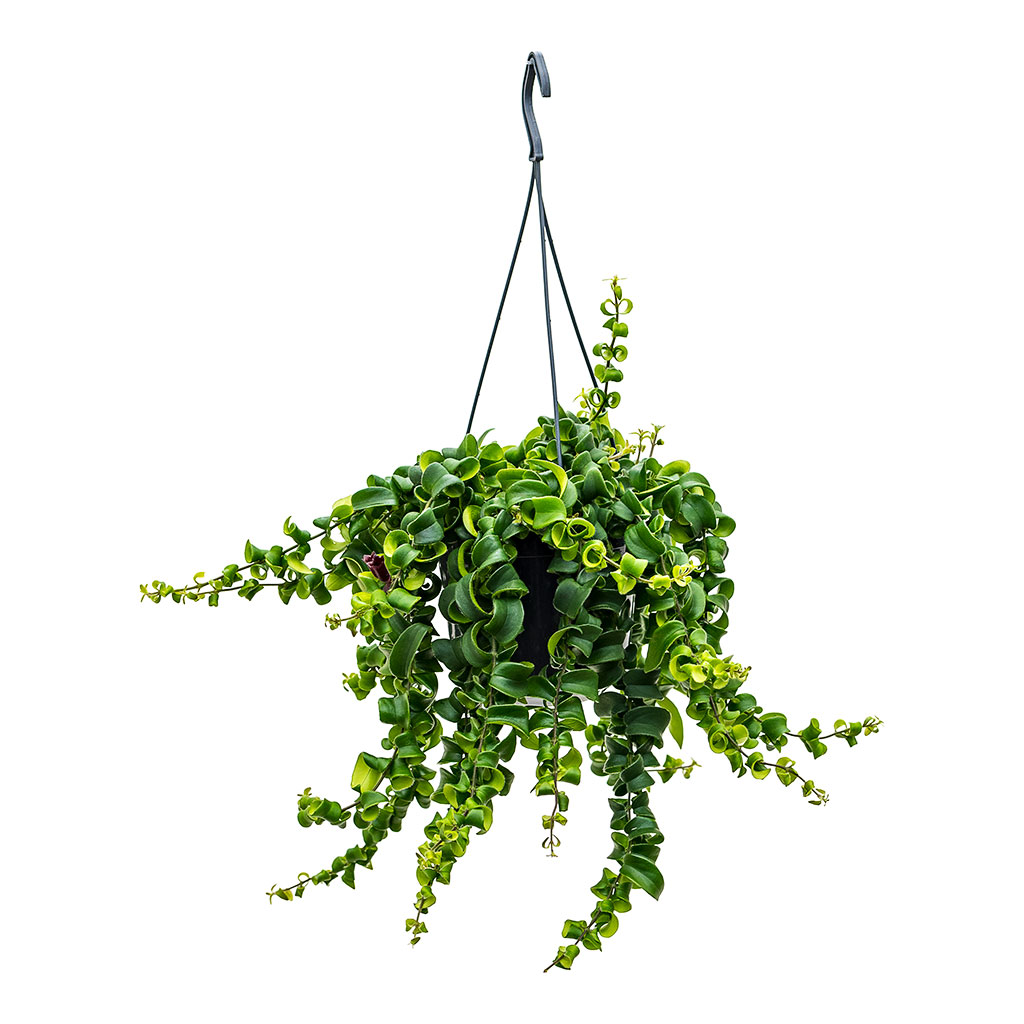

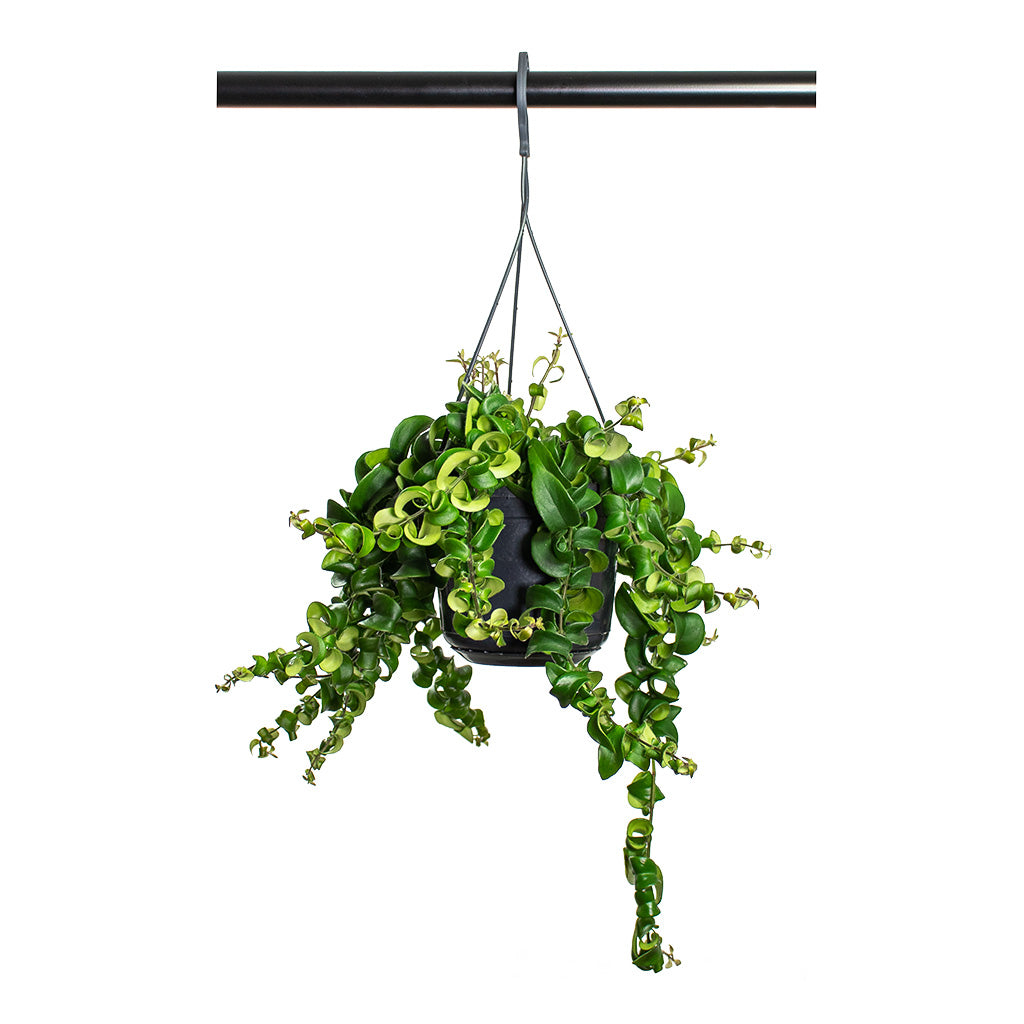


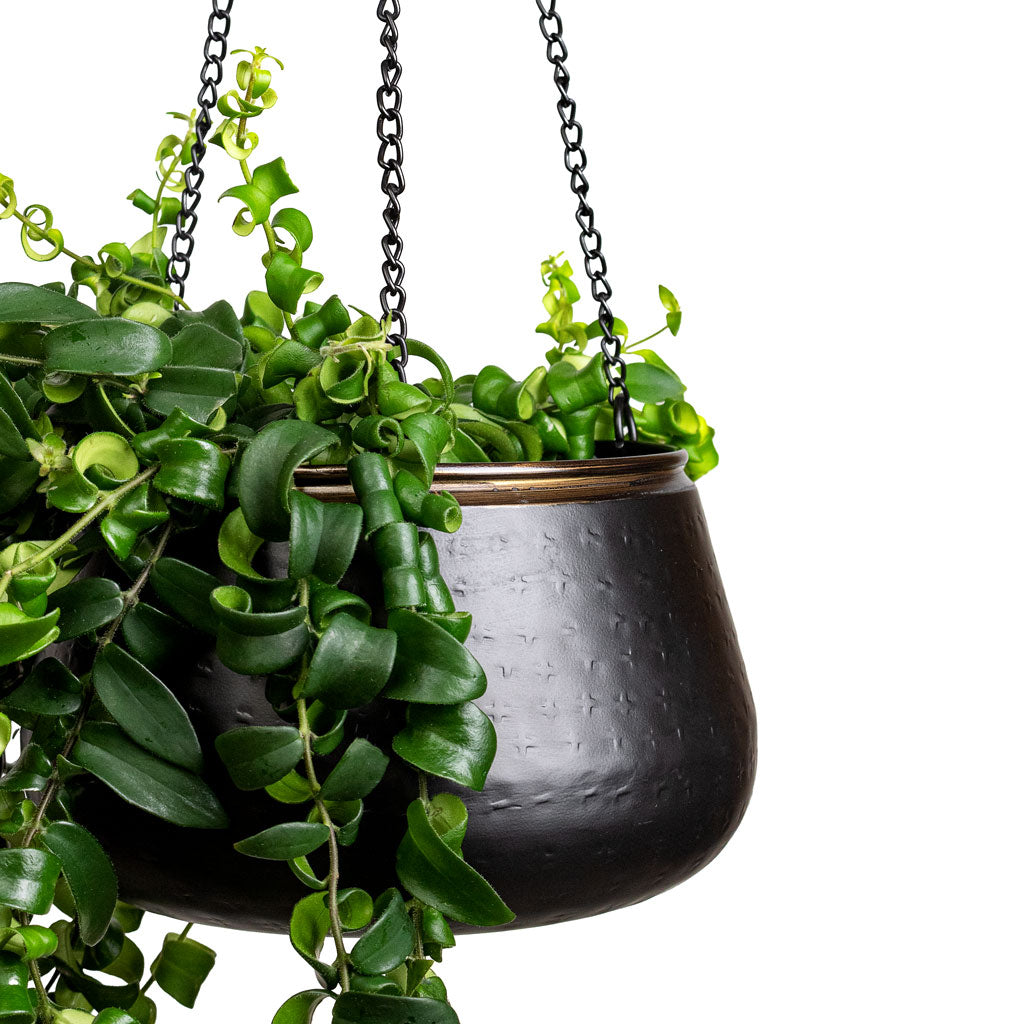
Aeschynanthus Rasta - Lipstick Plant
£37.99
Lady in red with trailing long compact curls, she is a blooming stunner and she knows it. The Aeschynanthus Rasta sends out trailing fronds of shiny sickle shaped foliage, tipped with lipstick-like rouge blooms. Rasta is more robust and displays fuller foliage than her delicate cousin the pink polka.
Please note: the stems and leaves on this plant are very fragile and despite our best efforts some may be lost during transit.






















